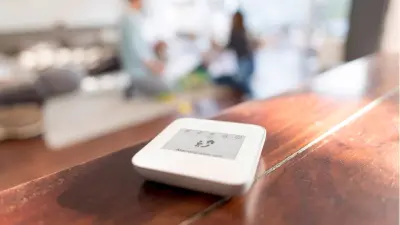Parking? Child’s play!

Whether downtown parking garages, or individual curbside spots – to make the search for parking in metropolitan areas as easy as possible, Bosch is using innovative technology and digital expertise to create new parking services.
64 percent
of city-dwellers in Germany are dissatisfied with their local parking situation

On the subject of parking, disparate divisions are working together for the first time to provide digital services for new customer segments, and involving these customers from the development stage. One of these services is “connected parking,” which aims to relieve the burden on drivers, cities, and the environment before the end of the decade. To quote Jürgen Auracher, the head of sales and marketing for connected parking: “Parking and the technical solutions tied up with it play a huge role when it comes to making life pleasant in growing cities.” Presently, Bosch is developing and testing two products in parallel, all of them aimed at tackling the major challenges posed by parking.
Parking, German-style
Community-based parking
Curbside parking is a rarity in big cities. That’s not to say it doesn’t exist, it can just be hard to find. In community-based parking (CBP), vehicles take care of this task themselves. As they drive past, they register the coveted vacant spaces and send this data via the automaker to the Bosch IoT Cloud. There, the data is processed and forwarded to vehicles that are on the lookout for a parking space. This eliminates much of the nerve-wracking and polluting search for somewhere to park, as drivers can go directly to a free space. “Out of a million vehicles in Germany, 100,000 are already fitted with the technical equipment required for this service to work, above all ultrasonic sensors and internet connectivity,” says Manuel Maier, who is responsible for this product.

Community-based parking at a glance

Loading the video requires your consent. If you agree by clicking on the Play icon, the video will load and data will be transmitted to Google as well as information will be accessed and stored by Google on your device. Google may be able to link these data or information with existing data.
Automated valet parking

Within defined areas, parking will soon no longer need a driver at all. In automated valet parking, cameras installed in parking garages thoroughly map the surroundings and any possible obstacles. Data collected in this manner is transmitted in real time via a server to the vehicle, which maneuvers as though driven by unseen hands, avoiding obstacles, and inserts itself into a parking space. The process is initiated by smartphone at the entrance to the parking garage. Drivers are notified where their vehicles are parked, and can later summon them to the pick-up point again – much in the same way that they arranged for them to park in the first place. “No more long distances to walk, no long waiting times,” says the product owner Gerrit Quast.

Automated valet parking at a glance

Loading the video requires your consent. If you agree by clicking on the Play icon, the video will load and data will be transmitted to Google as well as information will be accessed and stored by Google on your device. Google may be able to link these data or information with existing data.
FAQ about connected parking
Over the past few years, Bosch has systematically built up its own IoT architecture. This consists of intelligent devices, the Bosch IoT Suite, and the Bosch IoT Cloud. The Bosch IoT Suite offers all the software functions necessary to connect devices, users, and companies. At the same time, it’s the central software core of the Bosch IoT Cloud, with which Bosch can operate various applications. It is this Bosch IoT Cloud that enables the company to offer new services from a single source.
Installing all the technology needed for automated valet parking in a vehicle would take much too long. It would also be expensive. Bosch’s idea is to make good use of the technology that will be standard in most new cars in the years to come, and to link it with non-automotive technology that also already exists: in this case, the high-quality security cameras made by Bosch. In combination with the company’s digital expertise, driving can be automated very cost-effectively.
Summary
“Connected parking” aims to relieve the burden on drivers, cities, and the environment. In its attempt to solve the worst parking problems, Bosch cleverly combines different products.





